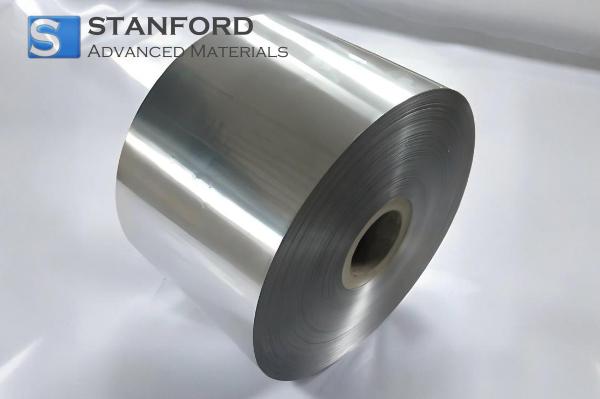Rhenium: Element Properties And Uses
Beschreibung
Rhenium (Re) is a rare metal with a melting point of 3 459 °C. It is used in jet engine components, high‐temperature alloys and catalysts. It is known for its strength and corrosion resistance. It is obtained as a byproduct during the refining of molybdenum and copper.
Einführung
Rhenium is one of the rarest elements in the Earth’s crust. It has a melting point of 3 459 °C and exhibits wear and corrosion resistance. It was identified in the early twentieth century. Its applications include high‐temperature superalloys and catalytic processes.
Chemische Eigenschaften Beschreibung
Rhenium forms stable compounds across several oxidation states, particularly in the +7, +6 and +4 states. This capacity enables participation in oxidation–reduction processes. Rhenium forms strong bonds with oxygen and other electronegative elements, thereby maintaining chemical stability under extreme conditions. It also bonds with other metals to form alloys. Researchers have determined that Rhenium compounds are used in catalysts for refining processes and in chemical sensors.
In many compounds, Rhenium forms measurable bonds with oxygen and other electronegative elements. Its ability to combine with other metals to form alloys contributes to its use in high‐performance applications. Studies have measured the stability and reactivity of Rhenium compounds in catalysts applied in refinery processes and chemical sensors.
Tabelle mit Daten zu den physikalischen Eigenschaften
|
Eigenschaft |
Wert |
Einheit |
|
Ordnungszahl |
75 |
- |
|
Atommasse |
186.21 |
amu |
|
Dichte |
21.02 |
g/cm³ |
|
Schmelzpunkt |
3 459 |
°C |
|
Siedepunkt |
5 900 |
°C |
|
Elektronen-Konfiguration |
[Xe] 4f14 5d5 6s2 |
- |
For further information, please visit Stanford Advanced Materials (SAM).
Häufige Verwendungen
Rhenium is used in several applications across various industries.
l One primary application is the manufacture of superalloys for jet engine and gas turbine components, thereby utilising its melting point performance at high temperatures.
l Outside the aerospace sector, Rhenium is employed in the production of electrical contacts, thermocouples and wires due to its electrical conductivity and resistance to deformation.
l In addition, Rhenium compounds are utilised in catalysts in the oil refining industry to reduce harmful emissions.
Zubereitungsmethoden
Due to its low natural occurrence, the extraction of Rhenium requires complex processes. It is typically recovered as a byproduct from molybdenum and copper mining, whereby separation techniques are applied to isolate the metal from ore residues. Subsequently, Rhenium is purified by methods such as solvent extraction and ion exchange. These procedures produce Rhenium of the required purity for industrial applications.
Häufig gestellte Fragen
What is Rhenium?
Rhenium is a rare and heavy transition metal. It has a melting point of 3 459 °C and remains chemically stable. It is used in high-temperature applications.
How is Rhenium produced?
Rhenium is typically recovered as a byproduct from molybdenum and copper ores. Separation methods, including solvent extraction and ion exchange, are applied.
How is Rhenium commonly used?
Rhenium is used in superalloys for jet engines, catalysts in refining processes, electrical contacts, thermocouples and various industrial components.
What are the notable chemical properties of Rhenium?
Rhenium forms compounds in the oxidation states +7, +6 and +4. It bonds with oxygen and other electronegative elements and remains stable under extreme conditions.
What contribution does Rhenium make to industrial products?
Rhenium increases temperature endurance in components such as turbine blades and catalysts, thereby meeting technical specifications.

 Bars
Bars
 Beads & Spheres
Beads & Spheres
 Bolts & Nuts
Bolts & Nuts
 Crucibles
Crucibles
 Discs
Discs
 Fibers & Fabrics
Fibers & Fabrics
 Films
Films
 Flake
Flake
 Foams
Foams
 Foil
Foil
 Granules
Granules
 Honeycombs
Honeycombs
 Ink
Ink
 Laminate
Laminate
 Lumps
Lumps
 Meshes
Meshes
 Metallised Film
Metallised Film
 Plate
Plate
 Powders
Powders
 Rod
Rod
 Sheets
Sheets
 Single Crystals
Single Crystals
 Sputtering Target
Sputtering Target
 Tubes
Tubes
 Washer
Washer
 Wires
Wires
 Converters & Calculators
Converters & Calculators
 Write for Us
Write for Us




 Chin Trento
Chin Trento



